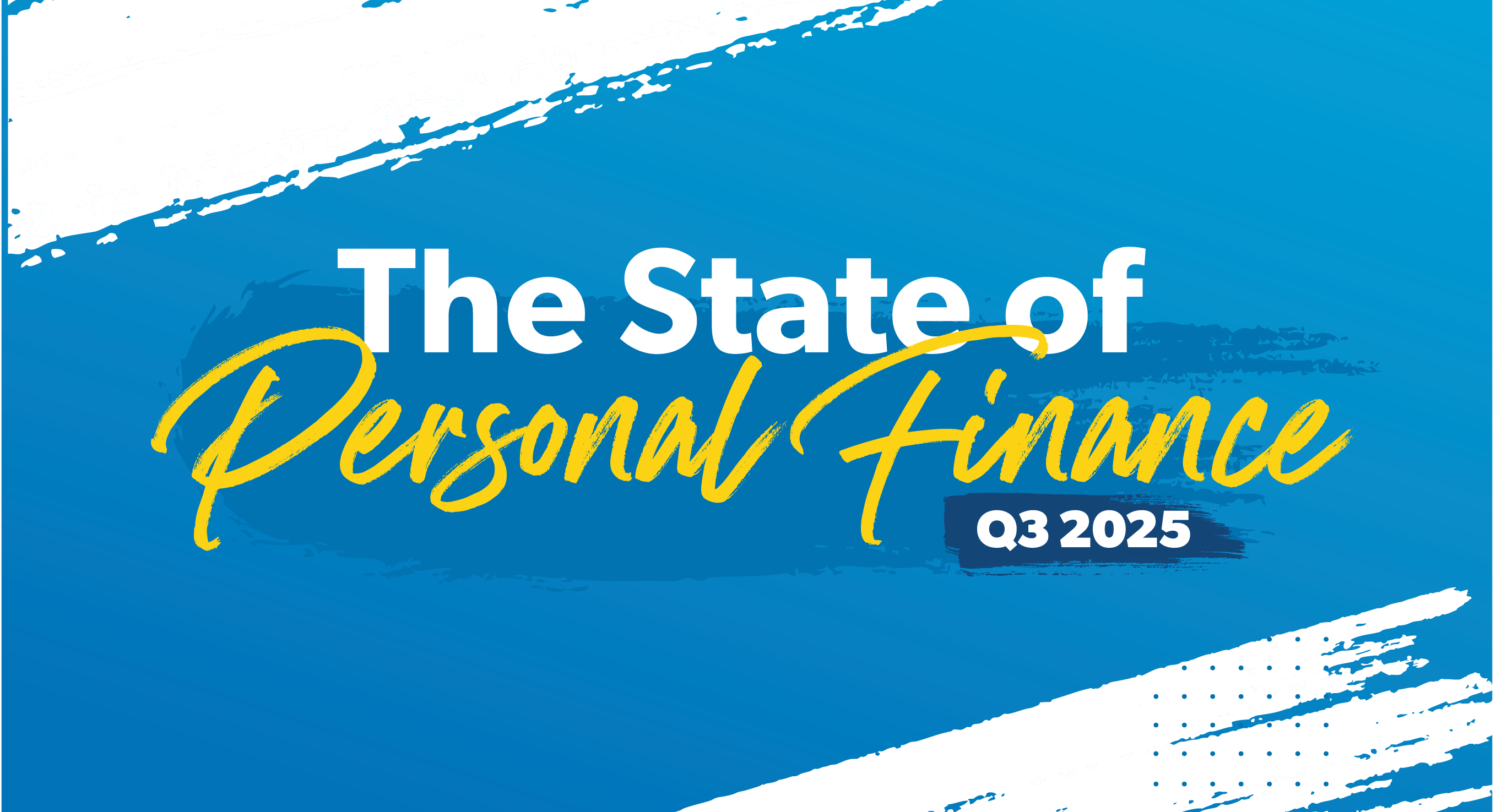Introduction
Americans are divided over the state of their personal finances—and that’s not an exaggeration. Many data points, like overall happiness with money and investing in the future, are split right down the middle, or close to it. Bad money habits are also an issue, with many Americans struggling to build the discipline to save money or choosing to pay their adult children’s bills each month.
In this edition of The State of Personal Finance report, we’ll dive into some key points about where Americans are with their money—including their willingness to accept financial advice from artificial intelligence (AI).
Executive Summary
- Around half of U.S. adults (51%) are either happy or very happy with the state of their personal finances—a fairly steady two-year trend.
- Half of Americans (49%) are living paycheck to paycheck.
- 43% of U.S. adults are optimistic about their financial future—a consistent figure since Q3 of 2024.
- Half of U.S. adults (50%) worry daily about their personal finances.
- 43% of U.S. adults report some difficulty paying bills, though just one-third (34%) say they struggle providing food.
- A little more than half of Americans (56%) who bought cars paid cash—and of those who paid cash, 89% are happy they did.
- Only 13% of U.S. adults plan to spend more on Christmas presents this year, and almost a third (29%) plan to actually spend less.
- Half of U.S. parents (48%) have given money or financial support to their adult children in the last 12 months.
- 32% of Americans say parents and students should share the responsibility of paying for college.
- About half of U.S. adults (47%) are investing for the future.
- 43% of Americans started investing for their future between the ages of 18–25, and the median starting age for investing is 28.
- A sizable number of Americans (41%) would rather enjoy life now than save for the future.
- One-third of Americans (34%) say they are more likely to spend money when stressed or emotional.
- Half of U.S. adults (49%) say it’s easier to get a loan than to build savings.
- 30% of U.S. adults had a loved one die without a will, and 66% say that having a will or an estate plan would have made the process much easier.
- 16% of Americans say they trust Al more than human experts for money advice.
Download a PDF version of the report.
Only Half of America Is Happy With Their Personal Finances
Money can’t buy happiness, but it can influence your overall outlook on life. And Americans’ feelings about money are split right down the middle. Around half of U.S. adults (51%) say they are either happy or very happy with the state of their personal finances—continuing a two-year trend.
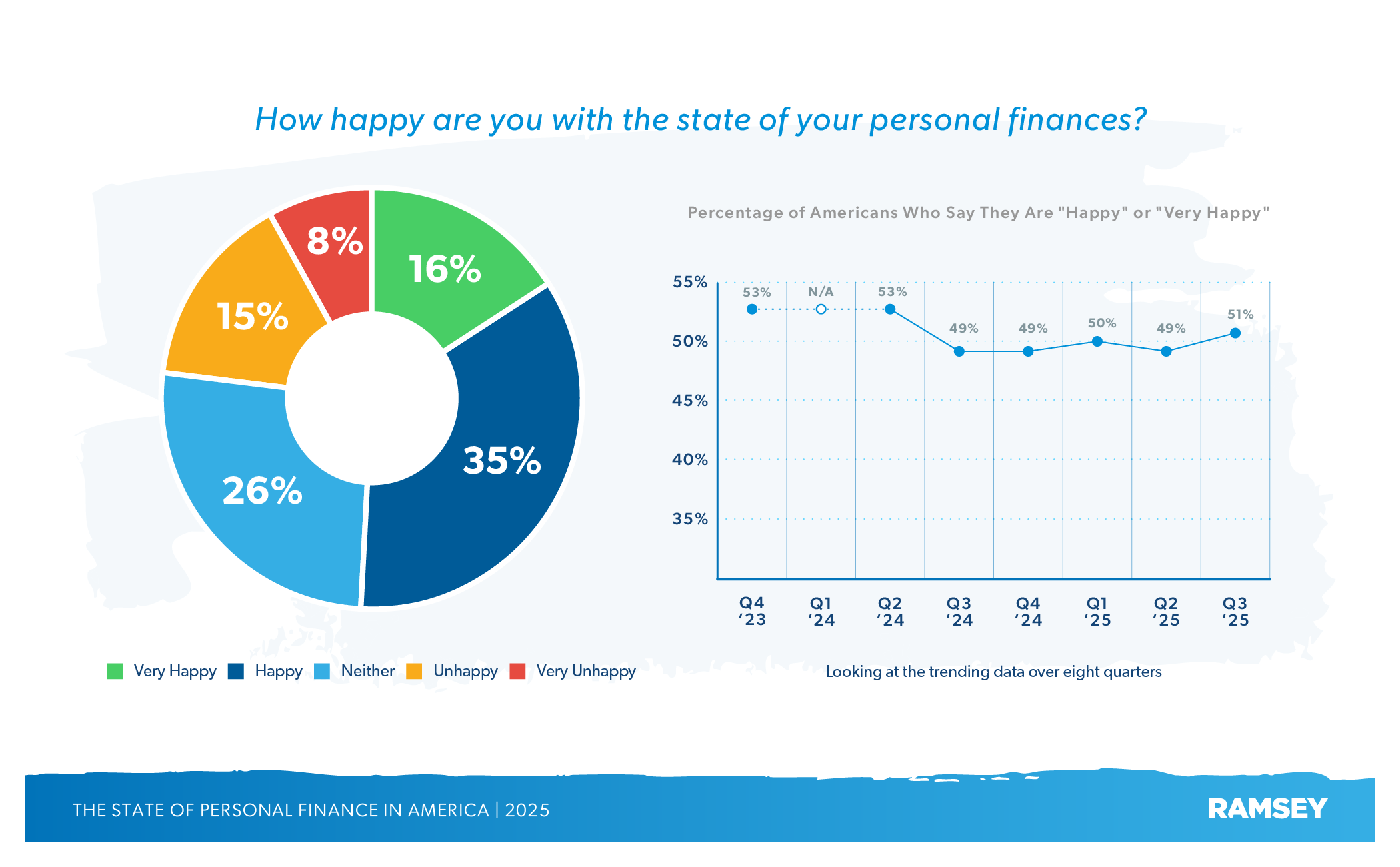
Males were more likely to be happy with their financial situation than females (62% vs. 41%). Married people were more likely to be happy than singles (65% vs. 37%). Both baby boomers and Gen Z are equally happy about their money situations (57% and 55%, respectively).
On the other side of the coin, about a third of U.S. adults (32%) are struggling or in crisis with their money, with baby boomers (23%) and Gen Z (31%) the least likely to be struggling.
Even more Americans (49%) are living paycheck to paycheck. Given the stress that comes with living paycheck to paycheck, we expect there’s some overlap with the people in this category and those who are not happy with their finances.
Though half the country is happy with their finances today, less than half of U.S. adults (43%) are optimistic about their financial future, a stable trend since Q3 of 2024. Gen Z are the most optimistic of any demographic (58%). Looking more long term, 63% of Americans overall say they are hopeful that one day they’ll achieve their money goals.
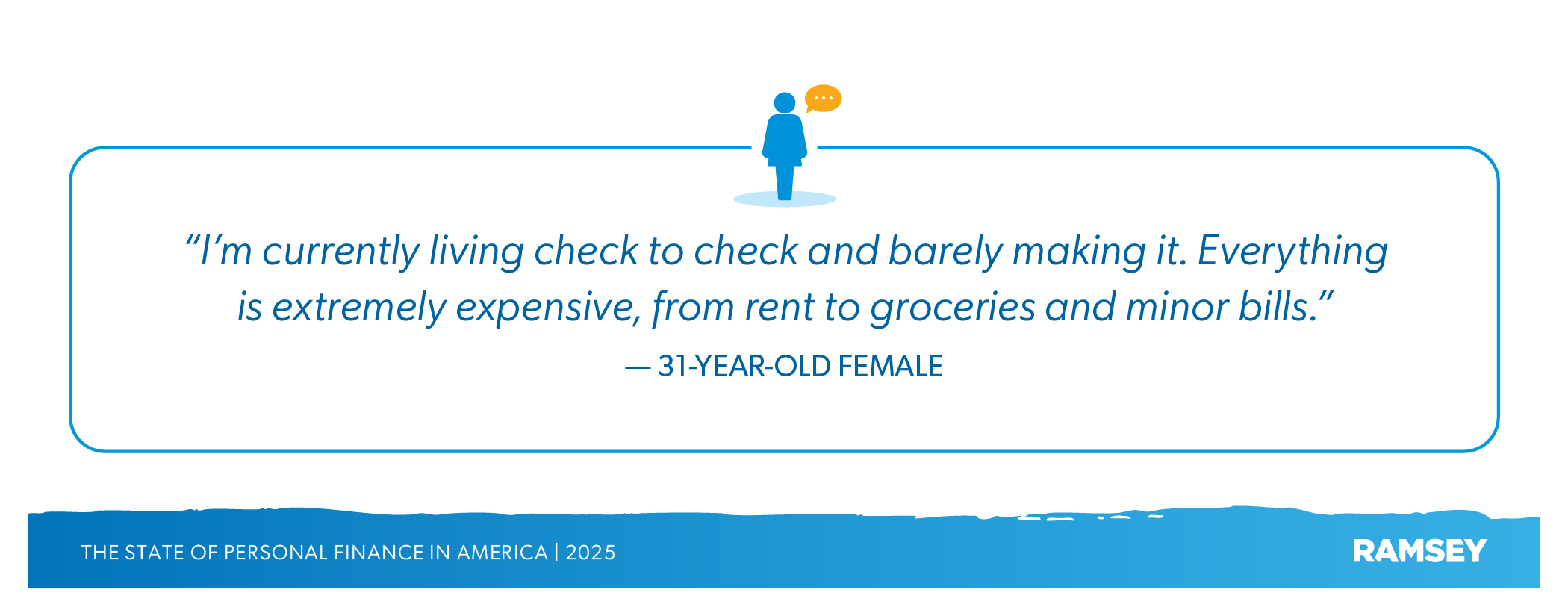
Worries About Money Hold Steady
Half of U.S. adults (50%) worry daily about their personal finances, with more than a third losing sleep at night due to their personal finances. Singles are more likely to worry daily than married couples (59% vs. 42%), along with parents with kids in their home compared to homes with no kids (61% vs. 46%).
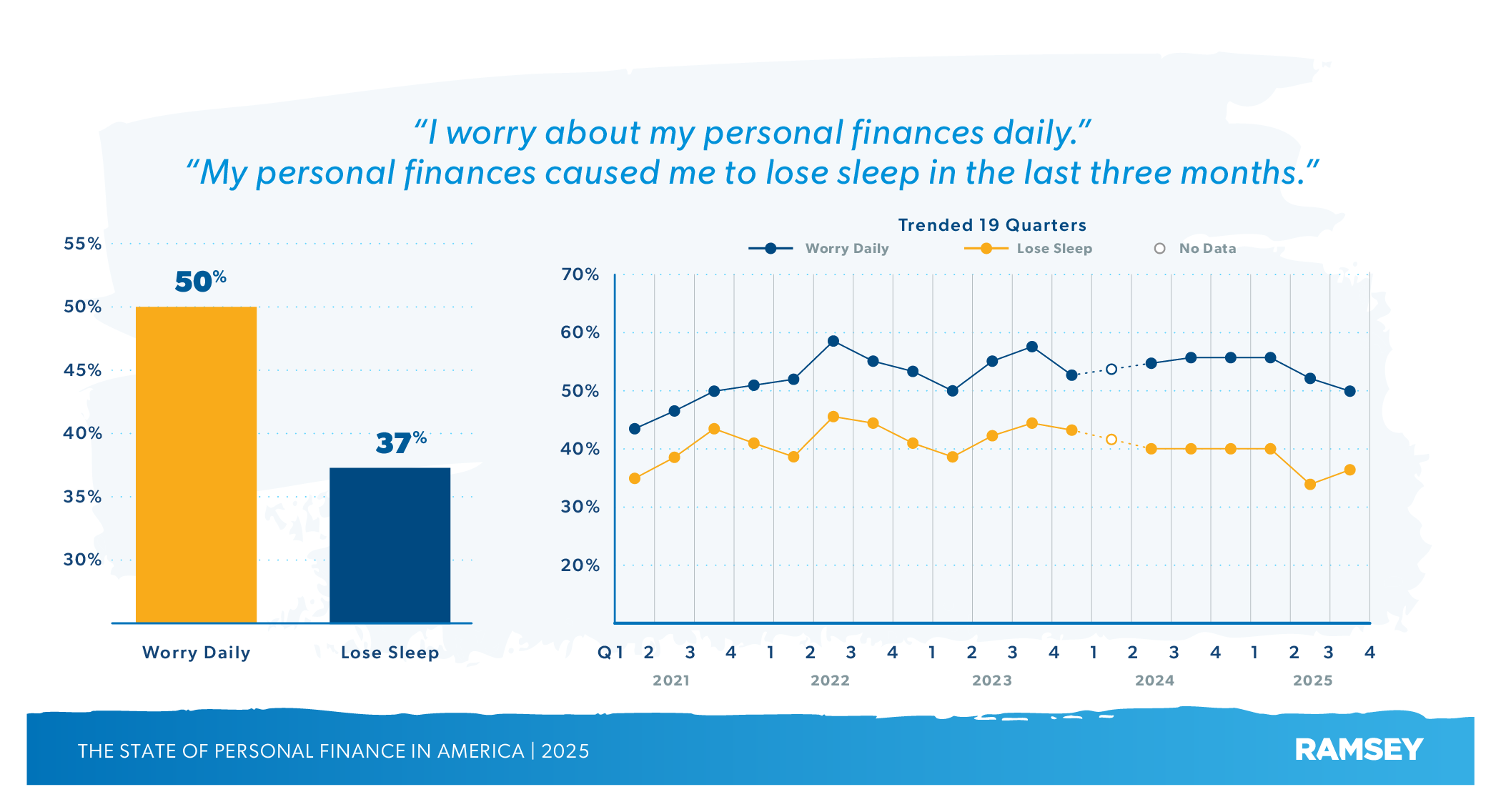
Looking at the last four years, the number of people who worry daily or lose sleep over money has remained steady after spiking in 2022 and 2023. In fact, the number of people worrying daily has declined since the beginning of 2025.
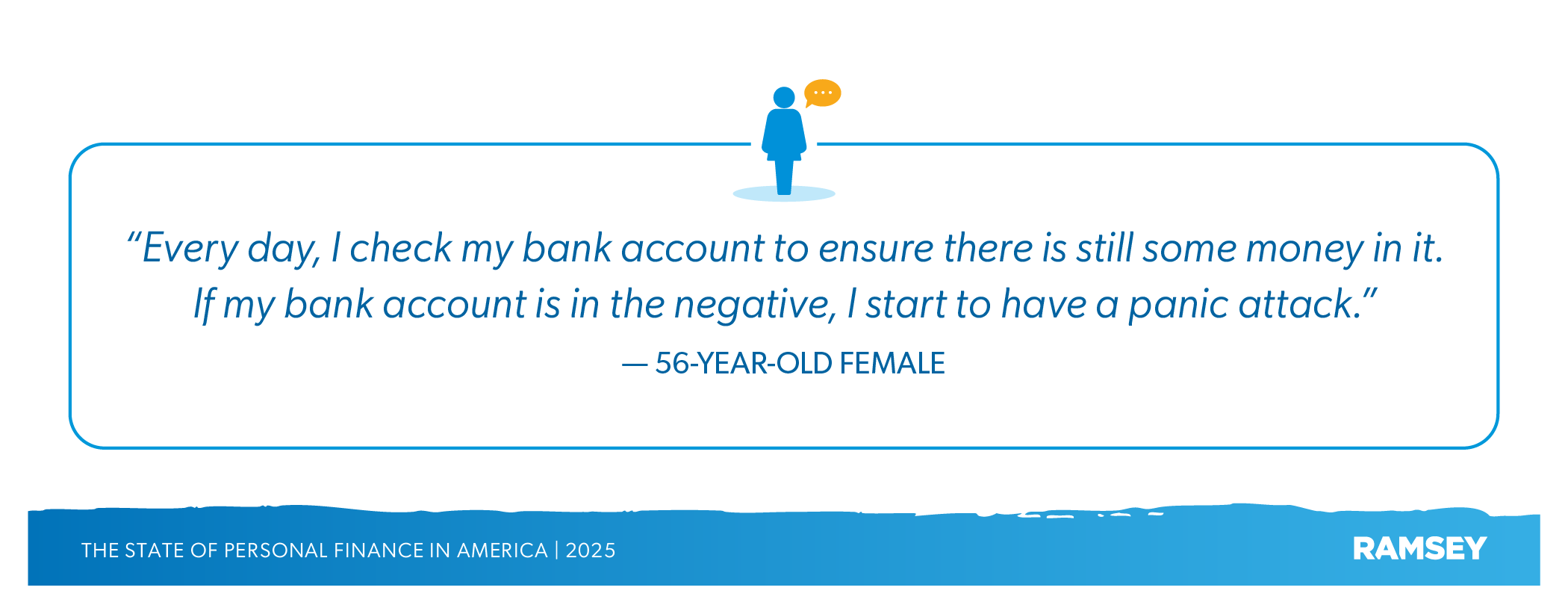
Costs and Spending Trend Downward
The country may be divided about their happiness with money and their worry about money, but a silver lining may be that consumer costs and spending are on a downward trend. However, even some of those data points do inch toward the middle point.
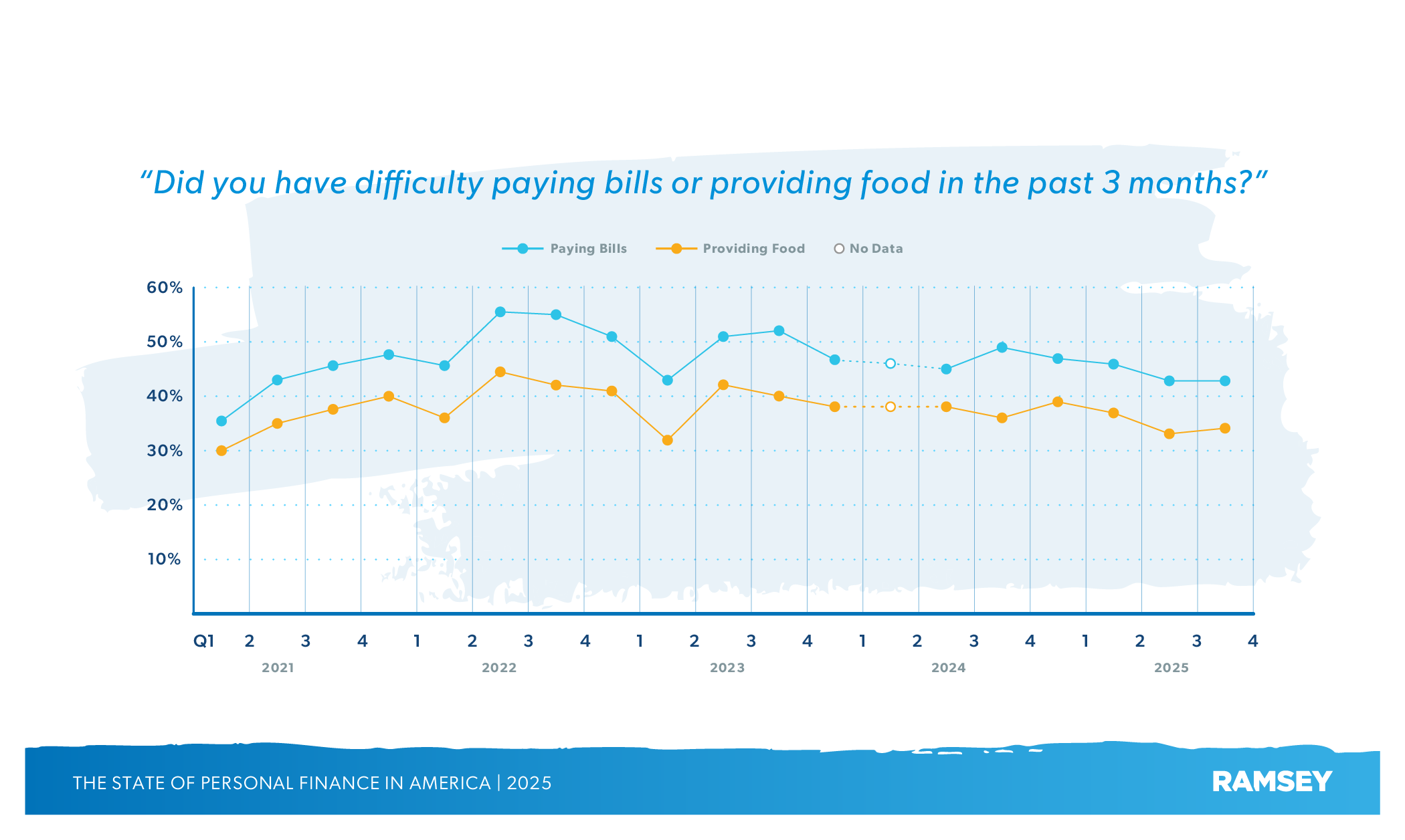
About 43% of U.S. adults report some difficulty paying bills, though just one-third (34%) struggle to provide food. Millennials and those with consumer debt had the most trouble with bills (59% and 58%, respectively). One in 3 Americans (33%) paid a bill late in the past three months. The number of people paying bills late jumped from last quarter but is still down from its peak in Q4 2023.
The percentage of Americans struggling to pay for housing is also on a downward trend since peaking in Q2 2023. This quarter, almost half of renters (48%) had difficulty making their monthly rent. And 33% of homeowners had trouble paying their mortgage. Overall, these numbers have declined more than 10 percentage points over the last two years.
What has also declined is the price of eggs, which has recently been used as a political football and a gauge of the affordability of food and consumer goods. According to the USDA, the cost of eggs has been steadily declining in recent months—after hitting a peak in Q1.1
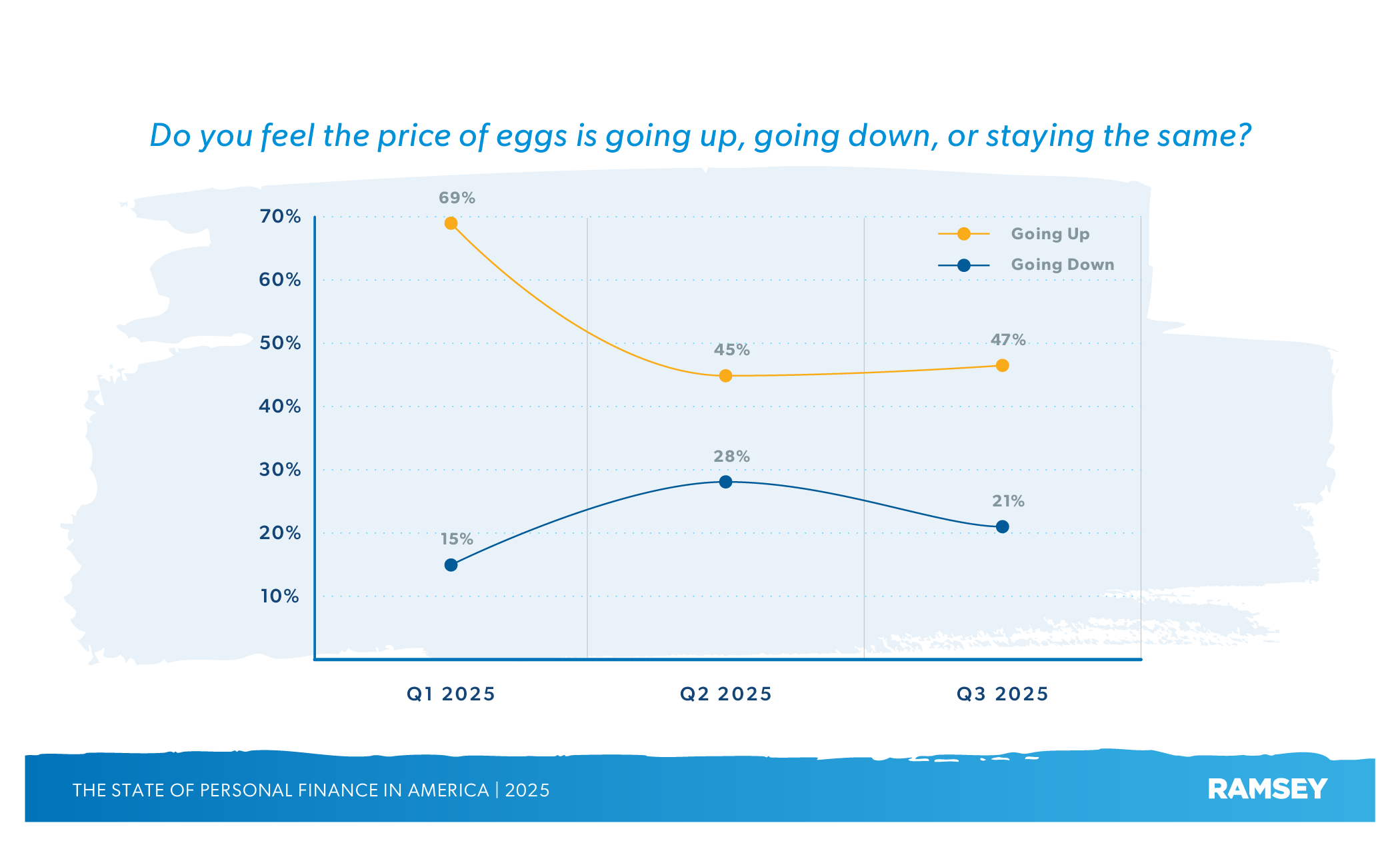
Public perception, however, is another story. About half of U.S. adults (47%) believe egg prices are still going up, staying steady after a 20-point decline last quarter. On the flip side, the percentage of Americans who believe egg prices are going down declined slightly from 28% to 21%. Political affiliation can further skew perception. Political liberals (52%) are more likely to think prices are going up than conservatives (37%).
On the car-buying front, 1 in 5 Americans purchased a car in the past year—that’s about 56 million vehicles. A little more than half of car buyers (56%) paid in cash. And of those who paid cash, 89% are happy they did, compared to only 55% who were happy about taking on car payments. That makes sense, considering car payments, which average around $500 for used cars and $700 for new cars in the U.S., are a big source of financial stress.2
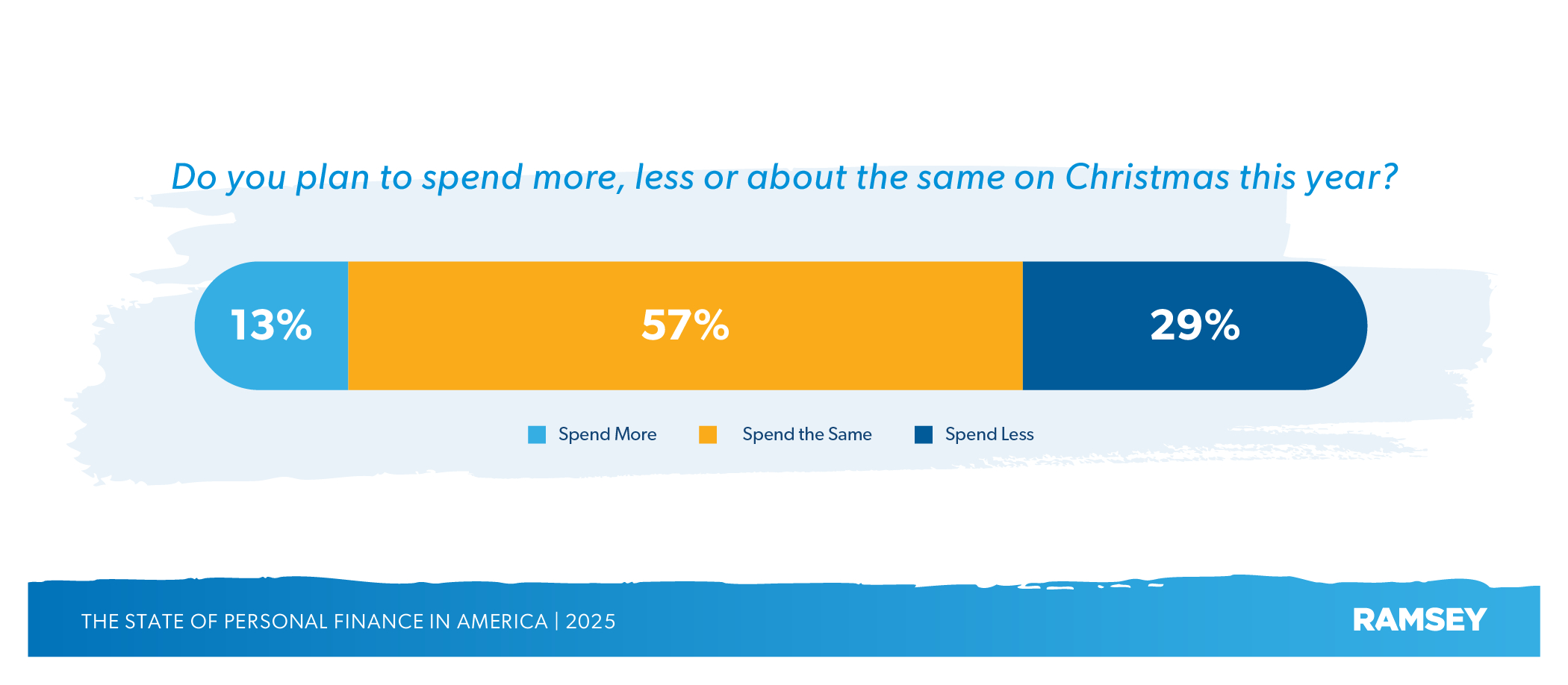
Looking ahead to the holiday spending season, a time of year when budgets can take a back seat, only 13% of U.S. adults plan to spend more on Christmas presents this year. And almost a third (29%) actually plan to spend less on Christmas. Demographically, Gen Z is almost twice as likely as Americans generally to expect to spend more on Christmas.
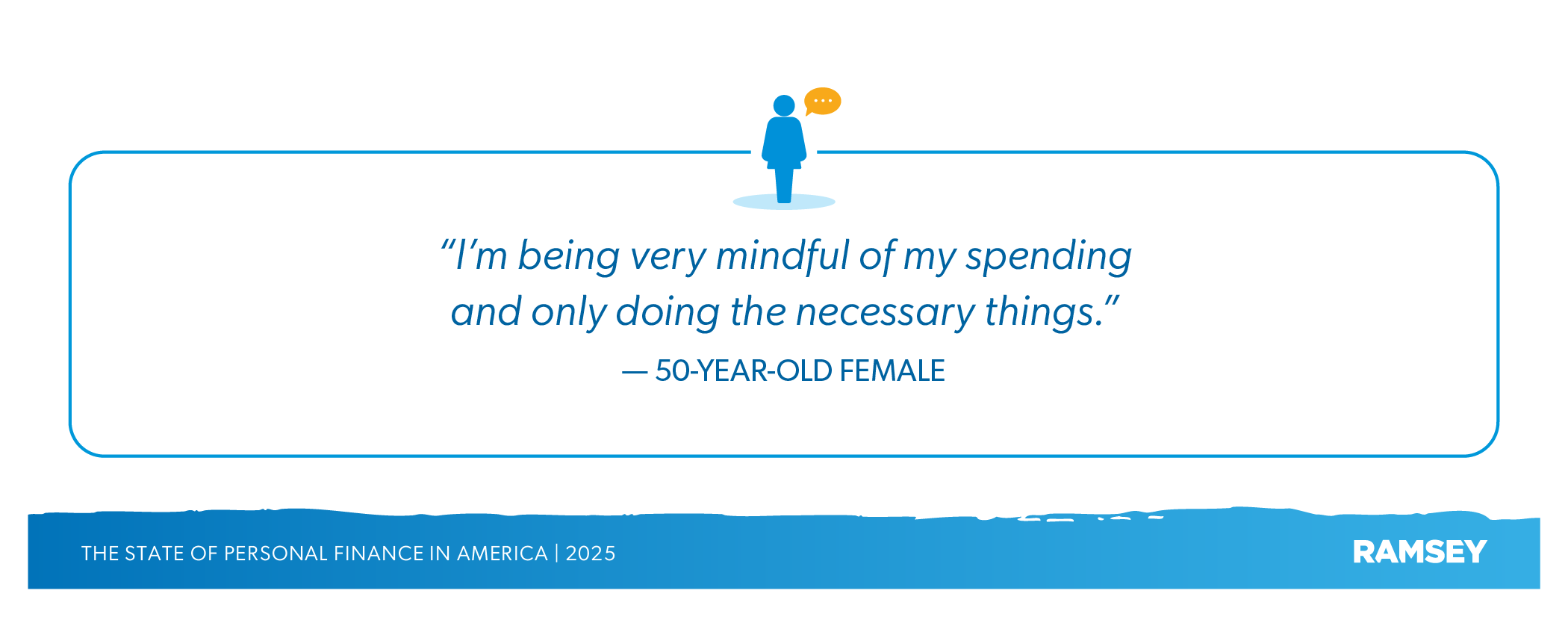
Parents Are Making Provisions for Their Adult Children
It’s one thing for parents to want the best for their children. It’s another to provide support for children who are supposed to be on their own. In another nearly even split, half of U.S. parents (48%) say they have given money or financial support to their adult children in the last 12 months. And among those parents who do give, 30% give to their adult children monthly.
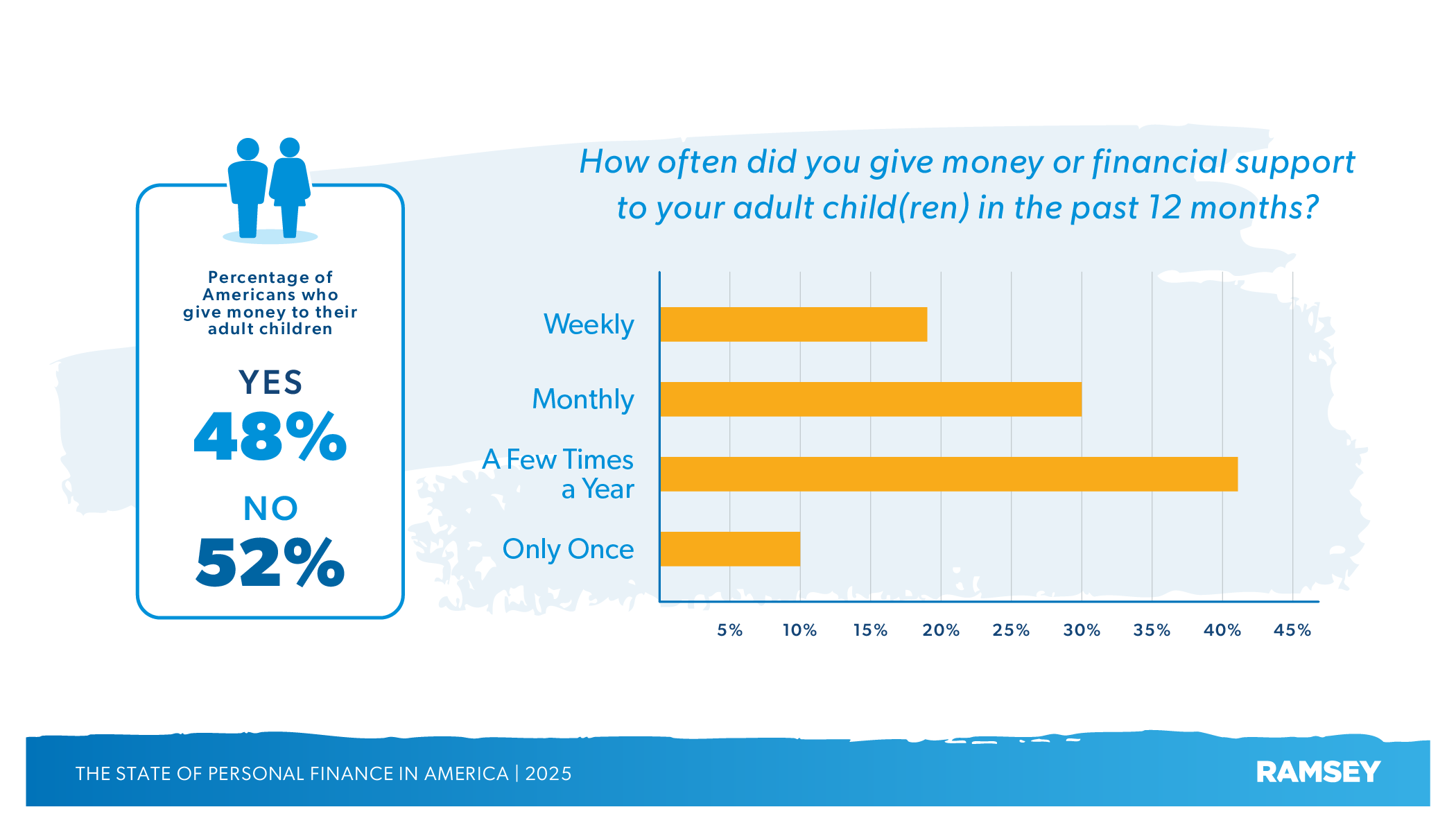
Gen X parents are more likely to provide financial help than baby boomers (58% vs. 38%). Gen X parents are also more likely to give monthly, with baby boomers more likely to give once or a few times a year. Income level had no effect on the number of parents providing financial help, but parents who have no consumer debt are almost twice as likely to give money to their kids than those with debt (58% vs. 35%).
A big source of parental support for many young adult children is the cost of college. And Americans are fairly split about how much parents should contribute. The most popular belief is that paying for college is a shared responsibility between parent and student (32%). Other options like parents paying all the costs (21%), the student paying all the costs (18%), and the government paying all the costs (17%) were not far behind. Baby boomers and households with a $100,000 annual income were the most likely to say paying for college is a shared responsibility—both around 40%.
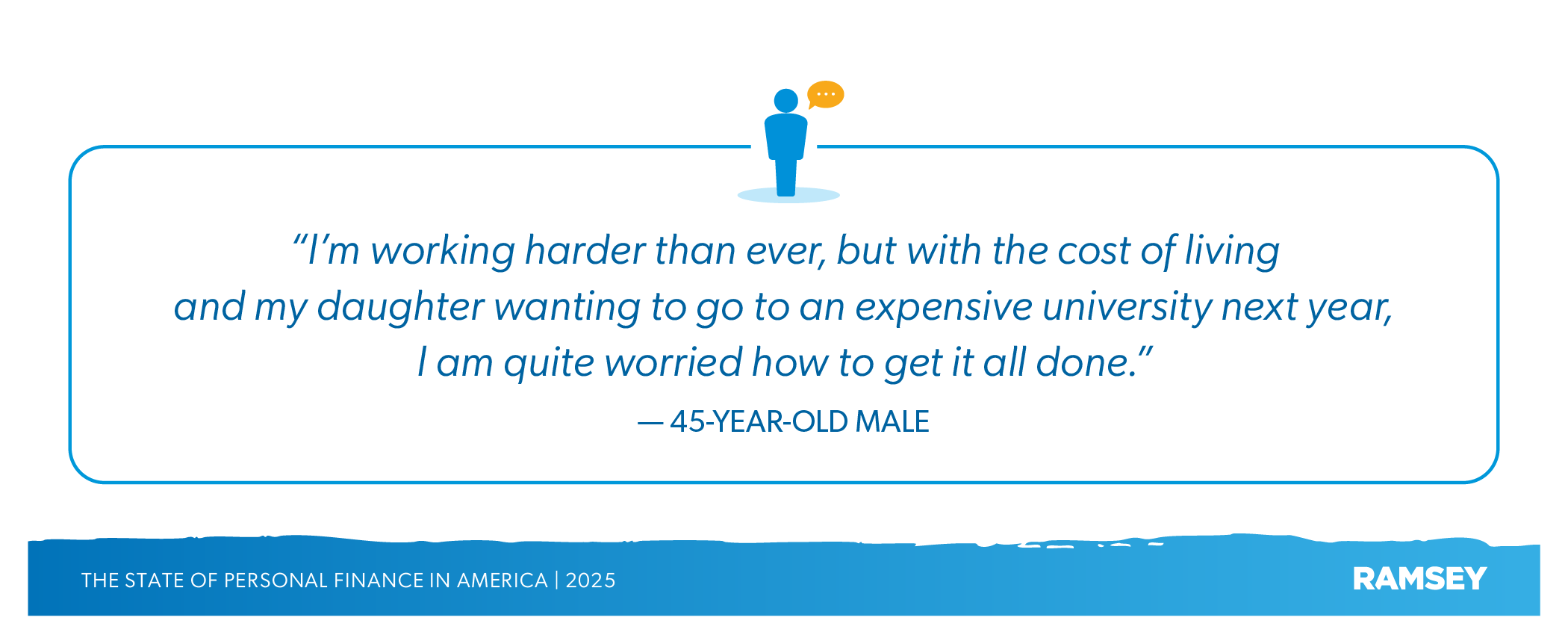
Planning for the Future Isn’t a Priority
Mom and Dad may be able to provide support for their grown children now, but at some point, those children will outlive their parents and be on their own. That means we all need to plan for the future.
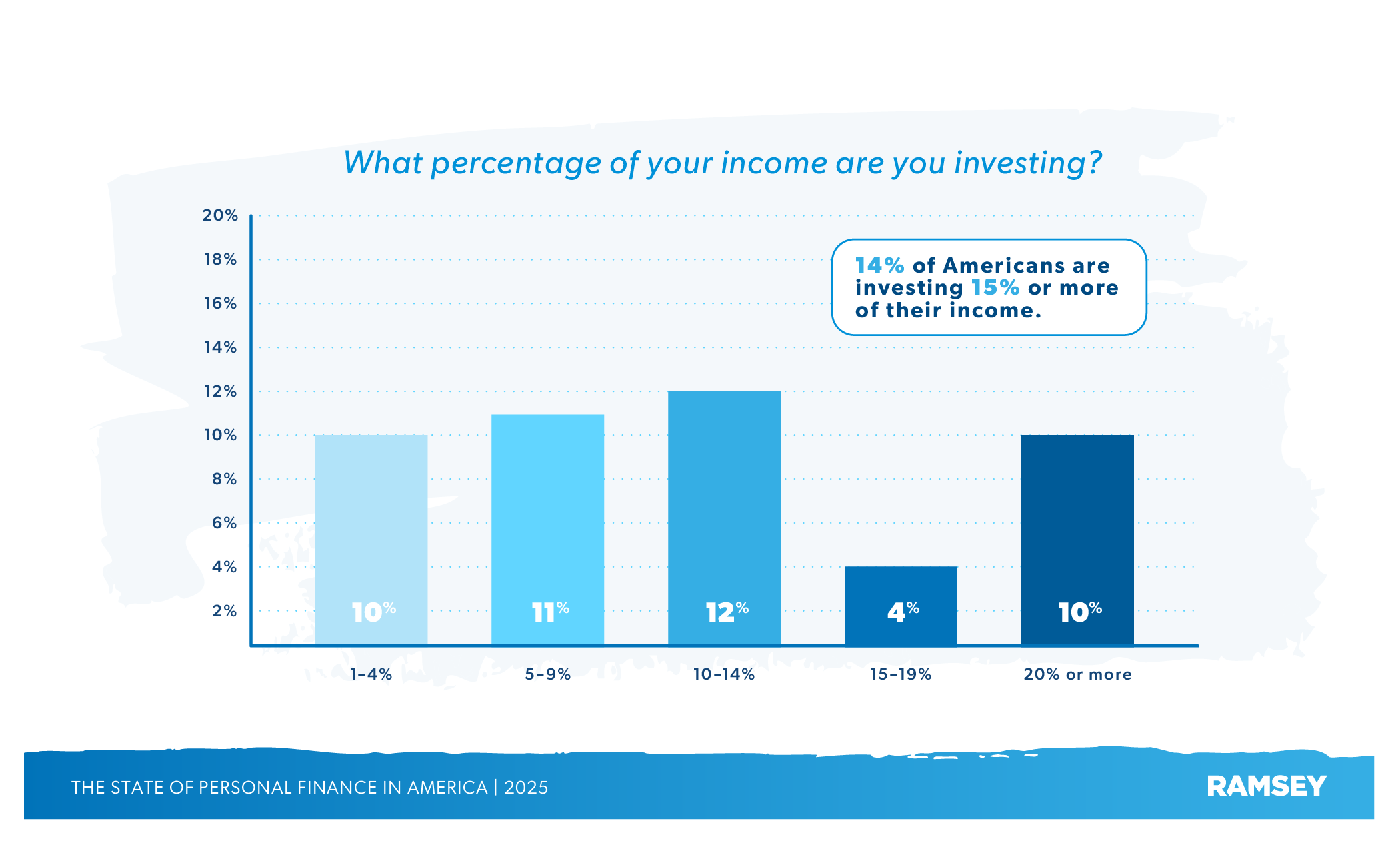
Unfortunately, our data shows most people aren’t saving like they should. While about half of U.S. adults (47%) say they are investing for the future, only 14% of Americans are investing 15% or more of their income—the recommended amount to both build wealth for retirement and leave room in your budget to reach other money goals. Even in Gen X, the generation next in line for retirement, only 15% are investing 15% of their income for retirement.
For those who do invest, a significant number get started young and never look back: 43% started investing for their future between the ages of 18–25. And the median starting age for investing is 28. Only 7% of U.S. adults start investing after 40.
A possible reason for the lack of enthusiasm for investing is bad money habits and beliefs. A sizable number of Americans (41%) say that they would rather enjoy life now than save for the future—an unwise attitude given that we all eventually get older and will need a nest egg to provide for our future needs.
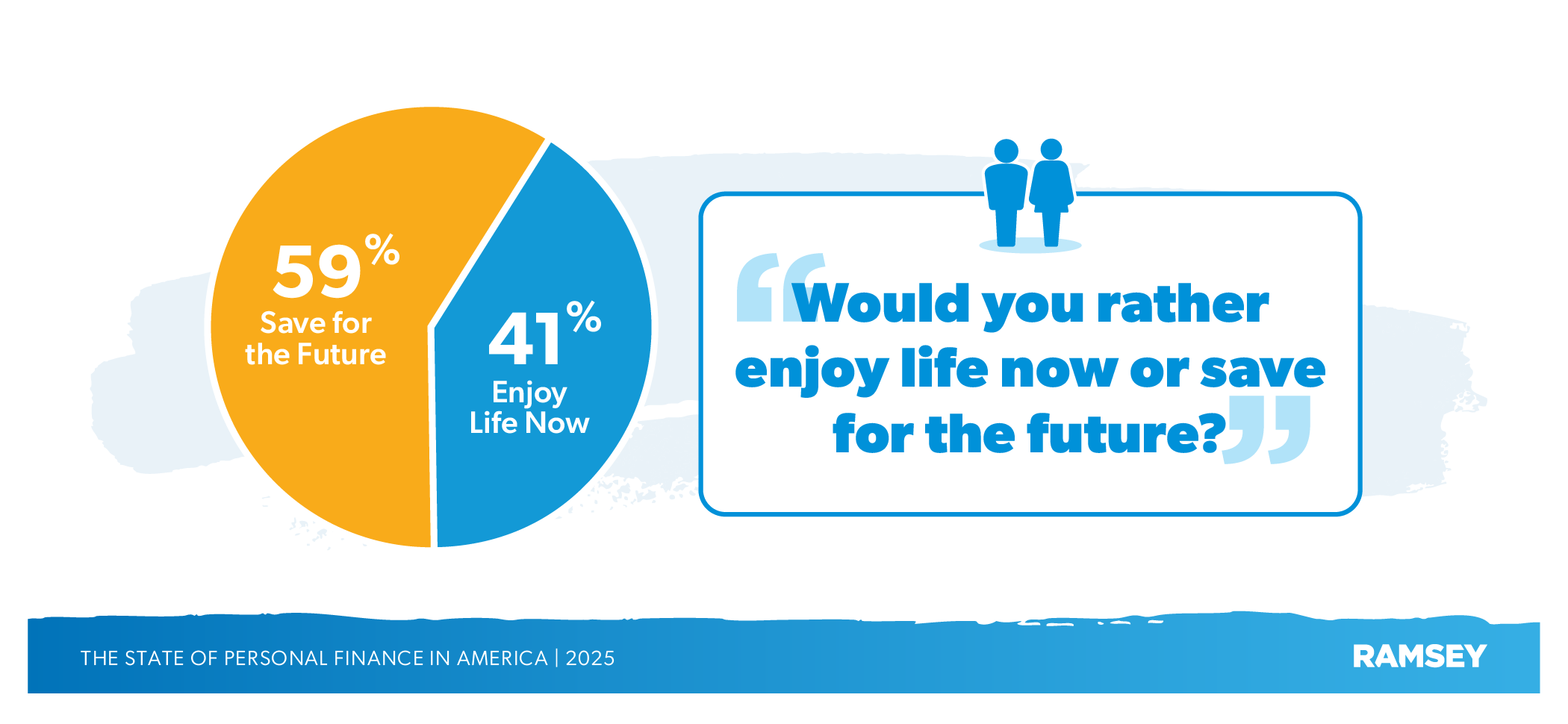
Generationally, Gen Z is more likely to say they would rather enjoy life now (50%). Those with consumer debt are also more likely to want to postpone saving compared to Americans without debt (44% vs. 37%).
Stress spending is another emotion-based money habit that can make bad financial situations worse. One-third of Americans (34%) say they are more likely to spend money when stressed or emotional. Almost half of Gen Z (48%) spend money when stressed, as well as 41% of those with consumer debt. And the percentage stays in the 30–40% range no matter what the annual household income.
Another possible explanation for the lack of saving is Americans’ belief that saving money is difficult. In fact, about half of U.S. adults (49%) say it’s easier to get a loan than to build savings.
Part of planning for the future is creating a will before you die (because not only will you get older eventually, but death is also inevitable). Many Americans die every year without a will, which ties up their estate in probate, leading to all kinds of costly hassles. In fact, 30% of U.S. adults report they’ve had a loved one die without a will (about 70 million people), and 66% say that a will or an estate plan would have made the process much easier.
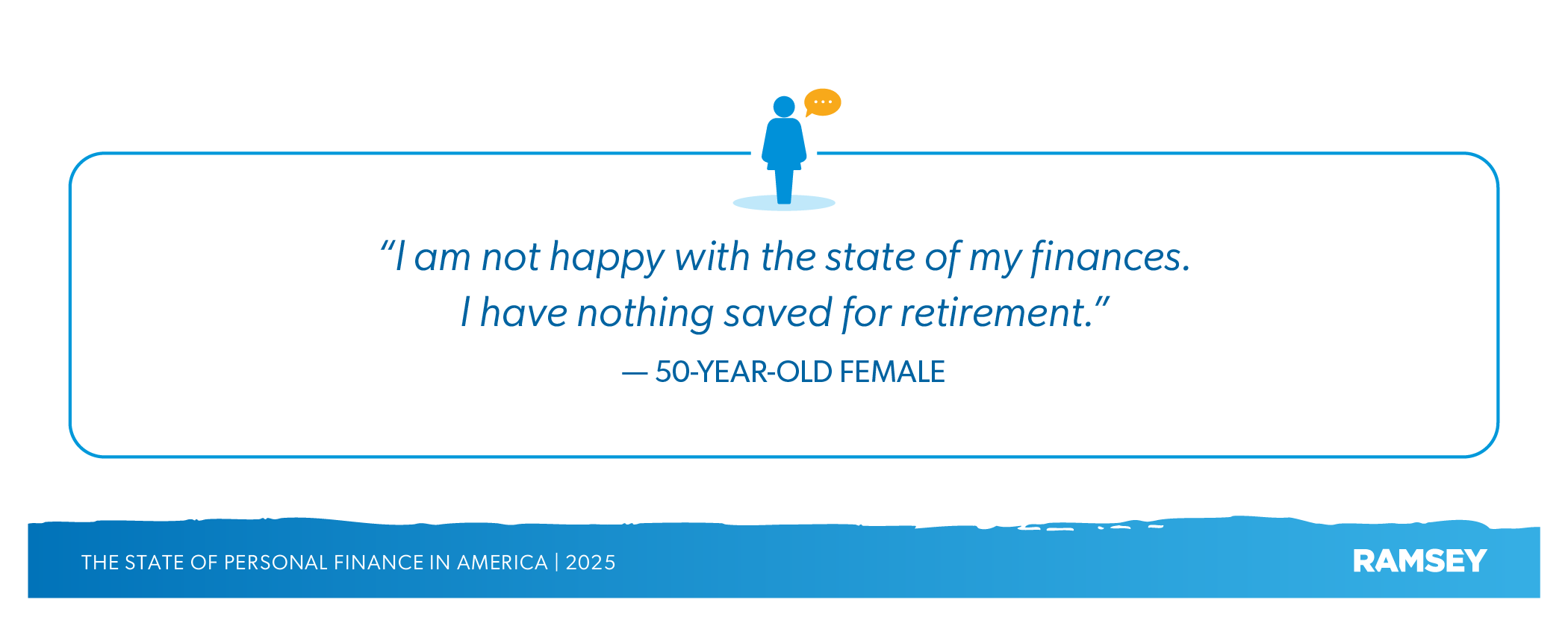
AI Is Becoming a Possible Source of Financial Guidance
The recent rise of artificial intelligence (AI) technology has caused dramatic shifts in many industries. AI-powered large language models (LLMs) are replacing conventional search engine results pages with fully fleshed-out answers to users’ questions. As people rely more on AI as a source of information, many have raised concerns over its accuracy and usefulness—especially for more complicated topics like the law or financial advice.
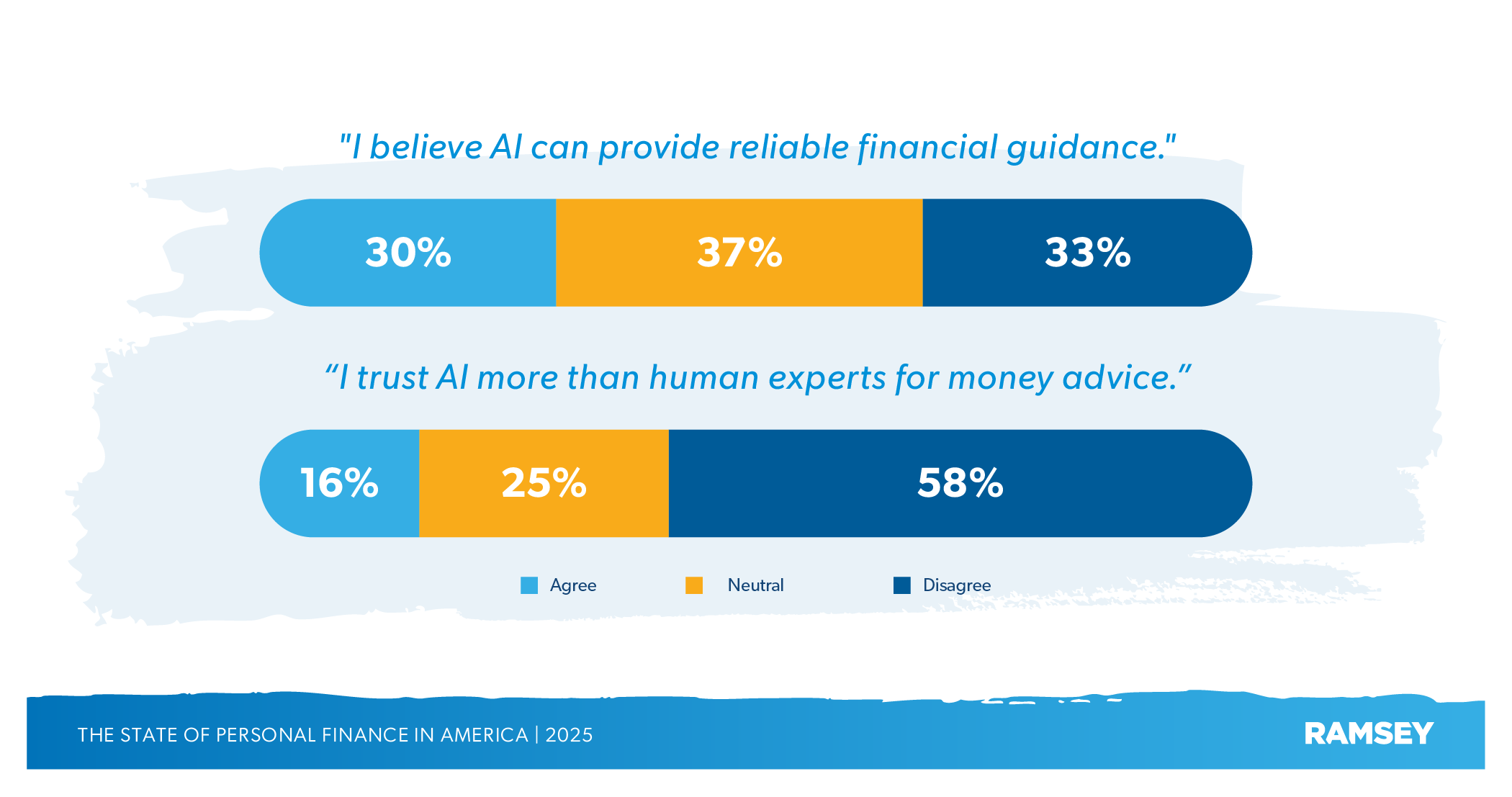
America is fairly split over AI’s ability to provide reliable financial guidance, with 30% saying it can and 33% saying it can’t. Almost a quarter of Americans (21%) say they would use money advice from Al in their daily lives. And 16% say they trust Al more than human experts for money advice.
Americans’ trust levels in AI vary widely from generation to generation. Gen Z is more likely to believe that AI can provide financial guidance (50%), compared to only 15% of baby boomers. Gen Z is also six times more likely (41%) than baby boomers (7%) to use money advice from AI in their daily lives. And Gen Z is nearly three times as likely as Americans generally to say they trust Al more than humans (41%).
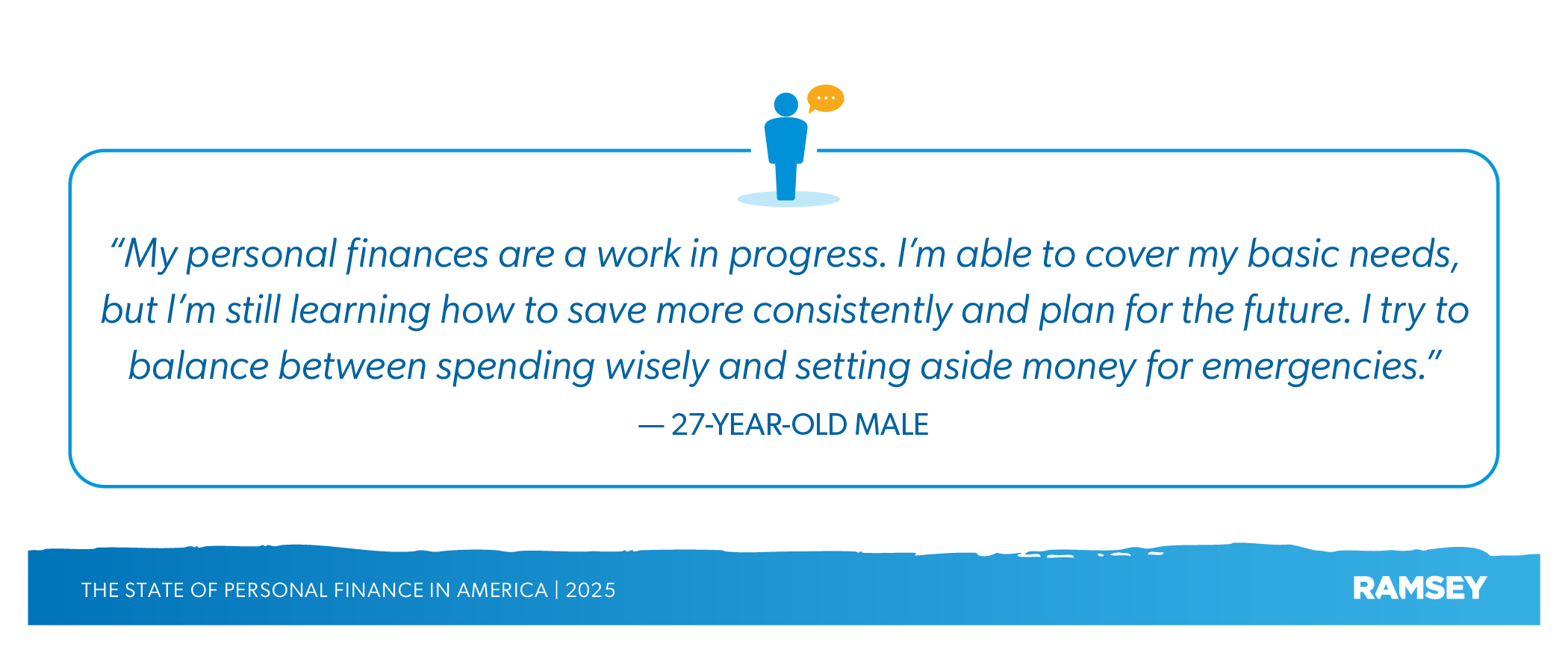
Conclusion
America’s outlook and perceptions about money are divided. Overall trends in spending are declining, but signs of bad money habits are also widespread. Worry levels and the number of Americans living paycheck to paycheck are holding steady. Americans seem to be stuck in a rut, looking for help with their money—something to jar them loose from a seemingly never-ending cycle.
Financial transformation is hard work, but it’s easier when you have a plan. Making a monthly budget, paying off any debt, and putting money away for the future are some of the big steps you can take to get the ball rolling to a better way of life.
It might hurt right now. In fact, it probably will. You’ll have to adjust your lifestyle to fit your budget. But the long-term benefits outweigh any temporary discomfort. Being wise with money also means having a support structure in your corner—encouraging you and holding you accountable. Trust us, all the effort and pain you’ll go through now will be worth it.
About the Study
The State of Personal Finance is a quarterly research study conducted by Ramsey Solutions to gain an understanding of the personal finance behaviors and attitudes of Americans. The nationally representative sample of 1,004 U.S. adults was fielded from September 15–19, 2025, using a third-party research panel. Margin of error was ±3.08%.
Since January of 2021, The State of Personal Finance has surveyed over 18,000 U.S. adults. Research from the study has been shared on hundreds of media outlets, including Forbes to Fox News Channel, The New York Times and Good Morning America.


